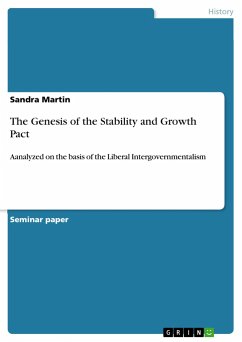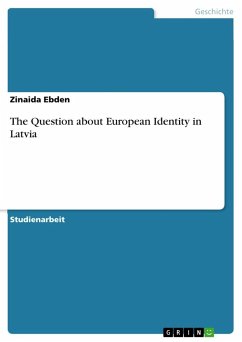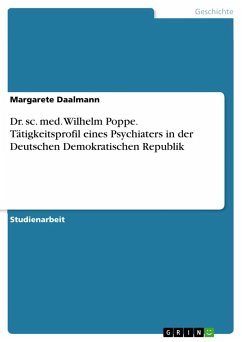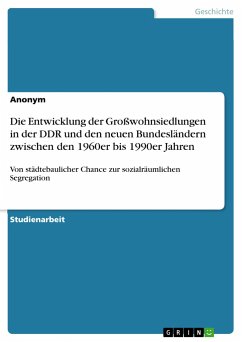
The Genesis of the Stability and Growth Pact
Aanalyzed on the basis of the Liberal Intergovernmentalism

PAYBACK Punkte
0 °P sammeln!
Seminar paper from the year 2014 in the subject History Europe - Other Countries - Newer History, European Unification, University of Bamberg, course: European Integration, language: English, abstract: The implementation of the European Economic and Monetary Union (EMU), with a common European currency was one of the most far-reaching integration-steps of the European Integration. The EMU was enacted in 1992 with the Treaty of Maastricht and envisaged its implementation in three stages. Thereby the member states should gradually transfer competences and controlling tools to the European level ...
Seminar paper from the year 2014 in the subject History Europe - Other Countries - Newer History, European Unification, University of Bamberg, course: European Integration, language: English, abstract: The implementation of the European Economic and Monetary Union (EMU), with a common European currency was one of the most far-reaching integration-steps of the European Integration. The EMU was enacted in 1992 with the Treaty of Maastricht and envisaged its implementation in three stages. Thereby the member states should gradually transfer competences and controlling tools to the European level and further the coordination of their monetary and economic policies. The purpose of the EMU was a uniform monetary policy for all member states, whereas the fiscal policies remain at the national level. With the approach of the third stage the integration process got into stumble und the project of a common European currency threatened to fail. Only after the ratification of an additional agreement - the Stability and Growth Pact - all of the European member states agreed to enter into the last stage of the EMU. Without this stability pact the implementation of the EMU would have been remained unfinished. This pact was not intended in the Maastricht Treaty, but constitutes an amendment to it. Wherefrom did the demand for this additional agreement come and how were the negotiations taking place? The genesis of the Stability and Growth Pact (SGP) will be analyzed in this paper. Thereby I concentrate on the two countries Germany and France. These were the dominant actors, who influenced and determined the development of the pact. The theoretical frame for the analysis is the Liberal Intergovernmentalism by Andrew Moravcsik. This integration theory focuses on "grand bargains" between nation states to explain the steps of the process of the European Integration. In the following chapters I will firstly carve out the relevant aspects of Moravcsik´s theory. Afterwards the theory is applied to explain the genesis of the SGP.













